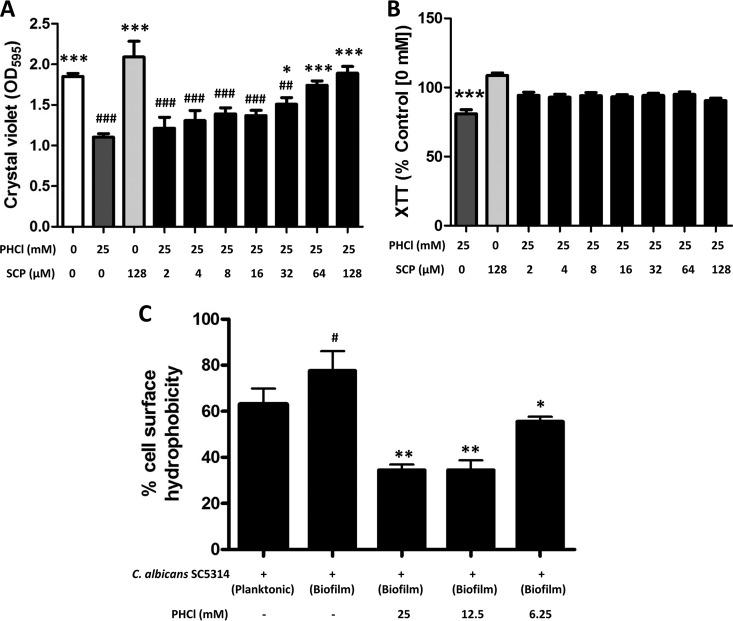FIG 3.
Pilocarpine hydrochloride acts through a specific muscarinic-like receptor to inhibit biofilm formation and modulate cell wall hydrophobicity. (A) Biofilm biomass was assessed using the crystal violet assay after C. albicans was cultured for 24 h in RPMI 1640 containing 25 mM PHCl and different concentrations of the nonspecific muscarinic receptor antagonist scopolamine (SCP) (0 to 128 µM). Data are expressed as raw OD595 values, and the bars represent the mean values (+SD) from triplicate wells of three independent experiments (n = 3). Candida albicans was cultured in the absence of any compound, in the presence of PHCl alone, and in the presence of SCP alone as controls. #, significantly different from cells cultured in the absence of any compound; *, significantly different from cells cultured in PHCl alone; * or #, P < 0.05; ** or ##, = P < 0.01; *** or ###, P < 0.001. (B) Biofilm metabolic activity was assessed using the XTT assay after C. albicans was cultured for 24 h in RPMI 1640 containing 25 mM PHCl and different concentrations of the nonspecific muscarinic receptor antagonist scopolamine (SCP) (0 to 128 µM). Data are expressed as percent metabolic activity compared to untreated controls (0 mM PHCl or SCP), and the bars represent the mean values (+SD) from triplicate wells of three independent experiments (n = 3). Candida albicans cultured in the presence of PHCl and SCP alone acted as controls. *, significantly different from cells cultured in SCP alone; ***, P < 0.001. (C) Cell wall hydrophobicity was assessed using the MATH assay (29). The bars represent the mean values (+SD) from duplicate samples of five independent experiments (n = 5). #, significantly different from cells cultured planktonically; *, significantly different from cells cultured as a biofilm in the absence of PHCl.

